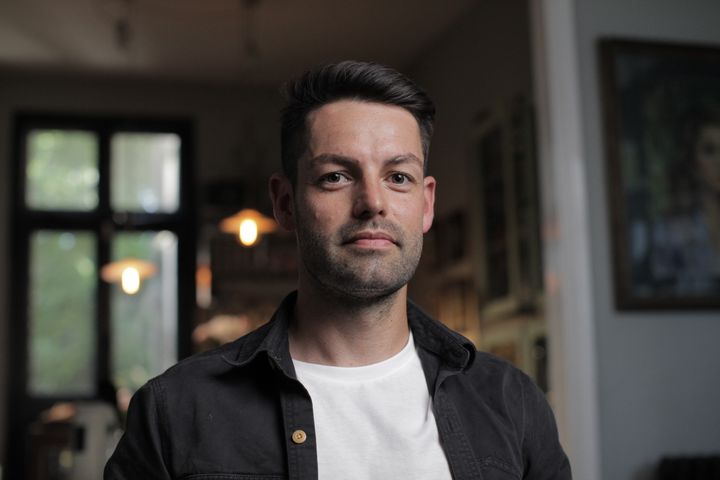Music
Trailers
DailyVideos
India
Pakistan
Afghanistan
Bangladesh
Srilanka
Nepal
Thailand
StockMarket
Business
Technology
Startup
Trending Videos
Coupons
Football
Search
Download App in Playstore
Download App
Best Collections
Technology
Update: First stage complete, main engine cutoff good, fairing separation good. Second engine ignition and cutoff successful, and GRACE-FO deployment complete (we won&t know if they&re in a good orbit until NASA confirms). Second burn and Iridium orbit good…. All satellites deployed, making that a successful mission!
Todaythe day for SpaceXlaunch of IridiumNEXT communications satellites and a pair of twin birds from NASA that will monitor the fresh water on the surface of the Earth. You can watch the launch right here:
Liftoff is scheduled for 12:47 PM Pacific Time, so SpaceX live stream should fire up about 15 minutes ahead of that; NASA will also have its own updates, since it has skin in the game.
This is an unusual launch — the rocket will be making some complicated maneuvers 300 miles up to make sure NASAsatellites are deployed correctly, then it travels the rest of the way to the targeted orbit for the communication satellites.
A few minutes after liftoff, the Falcon 9 first stage (incidentally, the one that launched the lost Zuma satellite in January) will detach and burn up. This will be its last mission — itnot one of the &Block 5& rockets with all the durability improvements, so it would take a lot of money and time to fly again, and the risk of failure would grow considerably every time. So this its swan song. Rocket, we salute you.
The fairing, however, which covers the payload, may be recovered after ejection by Mr Steven, a boat with a huge net on top.
The second stage will take the payload to about 300 miles up, at which point it will cut off, and about 11 minutes after liftoff the rocket will dip its nose and spin a bit to get the GRACE-FO satellites into position. About 45 minutes after they deploy, it will make a second burn and take itself up to nearly 500 miles altitude (this will take about half an hour), where Iridiumsatellites will be let out, ending the mission.
If for some reason things are delayed, the next launch opportunity is tomorrow at the same time.
- Details
- Category: Technology
Read more: Watch SpaceX launch the GRACE-FO and Iridium NEXT satellites here
Write comment (90 Comments)Baidu, the Chinese search giant, is spinning out its business unit responsible for utility apps and its mobile ad business to sharpen its focus on artificial intelligence.
As part of the spin-out, Baidu is selling a large chunk of its equity in the ‘Global DU& business to as-yet-undisclosed investors. The plan is to sell &a majority equity stake& in order to take Global DU independent. Once the deal is completed — it is targeted at a Q3 2018 timeframe —Baidushare of the business will drop to around 34 percent. Further, the business is likely to raise additional capital for growth.
Spinning out business units is commonplace among Chinese tech companies, Baidu itself recently did so with its financial services business.
Herman Yu, Baidu CFO, said this latest spin-out will give Global Du &autonomy and agility in its operation.&
It will also allow Baidu to focus more keenly on artificial intelligence. The firm said it will set up a new global business unit around its AI-powered services, including recommendation engine PopIn, keyboard appSimeji and other services in the U.S. and Southeast Asia. The plan is to allow these services to work more closely with BaiduAI labs, which include locations in Silicon Valley and Seattle.
Already, that push has helped Baiduearnings, which had been set back when the Chinese government invested internet advertising focused on medical services.
Despite the AI push, Baidu has suffered as key personnel departed over the past year.
Last week, Qi Lu, Baidupresident and COO who is also its highest-ranking AI specialist, departed the company due to personal reasons. The exit was unexpected, particularly since the former Microsoft executive only took the role less than two years ago.
Prior to Ludeparture, Baidu lost Andrew Ng— a globally recognized AI pioneer who set up its U.S.-based research labs — back in March 2017. Later in the year, the head of its Silicon Valley lab exited, too.
- Details
- Category: Technology
Read more: Baidu spins out its global ad business to sharpen its focus on artificial intelligence
Write comment (97 Comments)The Kata Containers project, the first non-OpenStack project hosted by the OpenStack Foundation, today launched version 1.0 of its system for running isolated container workloads. The idea behind Kata Containers, which is the result of the merger of two similar projects previously run by Intel and Hyper, is to offer developers a container-like experience with the same security and isolation features of a more traditional virtual machine.
To do this, Kata Containers implements a very lightweight virtual machine (VM) for every container. That means every container gets the same kind of hardware isolation that you would expect from a VM, but without the large overhead. But even though Kata Containers don&t fit the standard definition of a software container, they are still compatible with the Open Container Initiative specs and the container runtime interface of Kubernetes. While ithosted by the OpenStack Foundation, Kata Containers is meant to be platform- and architecture-agnostic.
Intel, Canonical and Red Hat have announced they are putting some financial support behind the project, and a large number of cloud vendors have announced additional support, too, including 99cloud, Google, Huawei, Mirantis, NetApp and SUSE.
With this version 1.0 release, the Kata community is signaling that the merger of the Intel and Hyper technology is complete and that the software is ready for production use.
- Details
- Category: Technology
Read more: The Kata Containers project launches version 1.0 of its lightweight VMs for containers
Write comment (92 Comments)Right on the heels of launching its concierge service Hooch Black, Hooch announced today that it has raised $5 million in seed funding.
The companybasic subscription of $9.99 gets you one free drink per day from a variety of partner bars and restaurants. Hooch Black (which you have to apply for, and which costs $295 per year) adds hotel deals, concierge service and other perks on top.
Even though Hooch had already raised $2.75 million in two pre-seed rounds, co-founder and CEO Lin Dai said it was more important to bring on strategic investors than it was to raise a lot of money: &We feel like the most important thing for our business is really the relationships.&
After all, he said the hospitality industry is controlled by &a few key companies,& so success is determined by working with those companies — itnot a situation where someone can just beat you by outspending you.
The funding was led by Revelis Capital Group and Blue Scorpion Investments, with participation from Access Industries Holdings, Warner Music Group (Dai said that Hooch will be working with Warner Music on content, events and promotions), FJ Labs, Diesel CEO Stefano Rosso, former Comcast CTO Sree Kotay and others.
At the same time, the company is expanding its advisory board to include Bob Hurst (previously vice chairman of Goldman Sachs), Bonin Bough (former chief media and ecommerce officer at Mondelez) and Teymour Farman-Farmaian (previously CMO and CRO at Spotify and now managing director of Bitcoin wallet company Xapo).
Dai also said Hooch is preparing to launch its blockchain initiative this summer. What does blockchain have to do with free drinks Well, Dai didn&t go into detail, but he suggested that by launching its own cryptocurrency token, Hooch could work with partners to create a &decentralized model for consumer rewards.&
Looking ahead, Dai said that Hooch might raise a &proper& Series A in 12 to 18 months, though he expects to reach profitability before then.
&At that point, we will have already built the moat around us with exclusive deals with all the top hospitality and experiential players,& he said. &That would be the appropriate time for us, if needed, to go back to a traditional round of funding.&
- Details
- Category: Technology
Read more: Drink-a-day startup Hooch raises $5M as it plans blockchain initiative
Write comment (94 Comments)Twitter is shutting down its TV apps on Roku, Android TV and Xbox starting on May 24, the company announced this morning. The news of the apps& closure comes at a time when Twitter is now trying to steer its users to its first-party mobile apps and its desktop website by killing off apps used by a minority of its user base & like the Twitter for Mac app it shut down earlier this year. And more recently, it hasattempted to kill off popular third-party Mac apps with a series of unfriendly API changes.
Itunclear why this has become Twitteragenda. While it can be a burden for a company to support a broader ecosystem of apps where some only have a niche audience, in some cases those &niche& users are also the most influential and heavy users. And arguably, anyone launching Twitterapp on their TV must be a die-hard user & because who is really watching that much Twitter on their TV
In terms of the TV apps& shutdown, this is a somewhat abrupt strategy shift. The company had been steadily expanding its live streaming video content over the past year, and it saw its TV apps as a way to get that video in front of a television audience & and particularly cord cutters & who are looking to watch major news events, sports matches, and other entertainment.
The Twitter Roku app was one of the later TV apps to arrive, launching just a year ago, following the September 2016 launch of the Apple TV, Fire TV and Xbox One apps. At the time, the company touted the app as a way for people to &…watch live events and see what people are talking about, keeping them connected to whathappening.&
Itlikely that none of TwitterTV apps have much traction. After all, Twitter didn&t have much in the terms of high-profile exclusive live video content. And on the TV, it has to compete for attention with top streaming services like Netflix and Hulu.
But these TV apps shutdowns aren&t tied to TwitterAPI changes, we&ve heard. Rather, Twitter has made the decision to kill off these apps as it works towards GDPR compliance. (Apparently, these apps were undeserving of time and attention on that front.) In addition, neither Xbox or Roku support a standard regularly supported video player, which made them more difficult to maintain. That also came into play with this decision.
Not all of TwitterTV apps are getting the cut, though.
Twitter for tvOS (Apple TV) and Twitter for Amazon Fire TV will continue to be available.
- Details
- Category: Technology
Read more: Twitter is killing several of its TV apps, too
Write comment (100 Comments)The team at Disney Research never fails to deliver fascinating (if not always particularly useful) experiments. Take Stickman. The robot is essentially one long limb, capable of some cool acrobatic maneuvers.
The system, detailed in a new paper from DR titled &Towards a Human Scale Acrobatic Robotic,& has two degrees of freedom and a pendulum it uses to launch itself in the air after swinging on a rope. The relatively simple robot tucks and folds, somersaulting in the air before landing on the padding below.
Those aerials are executed courtesy of a built-in laser range finder and six axis inertial measurement unit (a combination gyroscope/accelerometer), which calculate its position in-flight and adjust its positioning accordingly.
&Stickman emulates the behavior of human performers using a very limited set of sensing and actuation capabilities,& the team writes in the paper. &It is able to successfully perform several different somersaulting stunts by changing initial orientation and the timing of tuck, release, and untuck.&

The team says itgoing to continue experimenting with the robot, in an attempt to create more complex stunts down the road. No word on future plans beyond that, but for this headless acrobat of a robot, the sky, it seems, is the limit.
- Details
- Category: Technology
Read more: Stickman is Disney’s new headless acrobatic robot
Write comment (93 Comments)Page 5310 of 5614

 8
8













